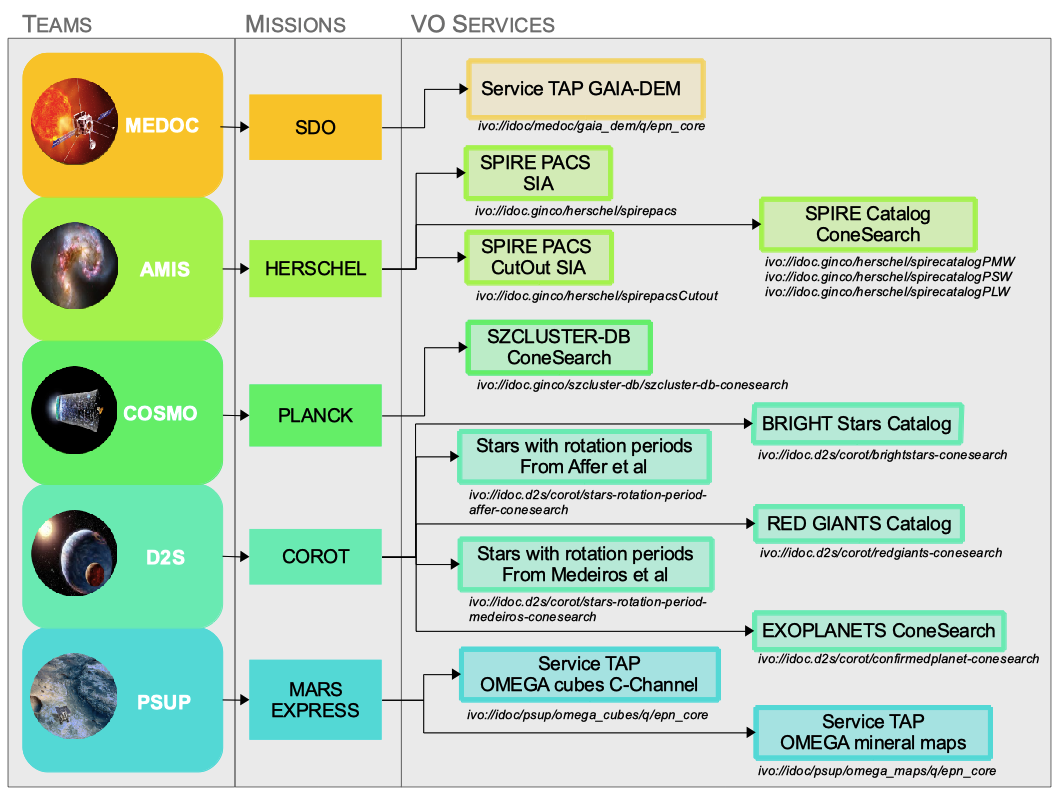IDOC VO Services
The international "Virtual Observatory" initiative was born out of the need to exploit the enormous amount of data produced by ground and space-based observation programmes, the volume of which has increased enormously due to the implementation of new generations of high density sensors.
It was also noted that the data from one instrument were sometimes not sufficient to fully describe an observed object or to analyse a phenomenon, but that, thanks to the multiplication of available instruments, the combined use of all the data relating to this object or phenomenon made it possible to resolve many questions.
Hence the founding idea of the Virtual Observatory (VO): to be able to cross-reference information regardless of the original source of production.
The VO has thus become an essential framework for the organisation of databases and services in astrophysics, through the standardisation of data structures and access protocols; it constitutes a response to the challenge posed by the management of large quantities of data, their analysis and distribution.
This integration into a standardised framework allows different systems to communicate, i.e. to have system interoperability. This allows the user to seamlessly correlate data from different sources and use generic tools. These possibilities have opened up new horizons in astronomical research.
The evolution of VO, at the international level, on which the developments carried out at IDOC-DATA are based, is done within the framework of the IVOA (International Virtual Observatory Alliance), within which expertise is shared, and VO standards are discussed and formalised.
 We have defined a global naming authority which is the root of the naming of the resources from IDOC : IVOA identifier: ivo://idoc [Authority]
We have defined a global naming authority which is the root of the naming of the resources from IDOC : IVOA identifier: ivo://idoc [Authority]
Taking advantage of the advanced features of SITools2, we published some catalogs and some images under VO Services SIAP and Cone Search.
For PSUP data and MEDOC data, we are using DACHs as TAP service provider.
Example of using HESIOD data (SPIRE Photometry) for Herschel Planck comparison through the VO tool Aladin.





